7 Things You Can Do in Your 60s to Better Prepare for Retirement
Once you hit 60, you’re that much closer to retirement. Whether this milestone is still a year (or a couple years) away, you can take a few specific steps when the time comes to better prepare and thus fully enjoy your golden years. We'll discuss seven such actions in this article.
Understand how Medicare works
Not familiar with Medicare complexities? You’re certainly not alone! A recent Harris Poll survey claims more than 7 out of every 10 participants over age 50 wish they had a better understanding of Medicare coverage overall. Now is the time to further educate yourself, as doing so can save you not only money but potential headaches along the way. Beyond knowing what each portion covers (Medicare consists of four parts), be sure to familiarize yourself with enrollment periods.
The government will often automatically enroll those who've received Social Security (or Railroad Retirement Board) benefits for at least four months prior to their 65th birthday in Medicare Part A (hospital insurance) and Medicare Part B (medical insurance) at age 65—with a Medicare card/instructions typically arriving in the mail three months beforehand. All other eligible seniors have a seven-month enrollment window to sign up for Medicare, beginning three months before their 65th birthday and ending three months thereafter (you can apply for Medicare benefits online or over the phone). Keep in mind that if you miss your initial enrollment period, you can sign up during the Medicare general enrollment period (January 1–March 31, annually) with coverage going into effect on July 1st.
Keep in mind that if you don’t qualify for free Part A premiums and don’t buy in when you’re first eligible for Medicare, your monthly premium could go up 10%—forcing you to pay this late enrollment penalty for twice the number of years you fail to sign up. You’ll also want to keep in mind late enrollment penalties for Medicare Part D, which covers brand-name and generic drugs.
Be sure to check out these costly Medicare mistakes you’ll want to avoid, including how your income can adversely impact the price of your premiums.
Evaluate your future healthcare needs
If you retire before the age of 65, know that you can negotiate health insurance coverage from your previous employer if you received an exit package or otherwise look into coverage through your spouse’s plan (if he or she is still working).
There’s also COBRA, which you can access for up to 18 months after separating from your employer—though the cost is sometimes prohibitive—as well as insurance via HealthCare.gov. Several states have their own exchanges that allow you to purchase coverage through the state or otherwise their federal counterpart. Both state and federal exchanges offer coverage subsidies based on income: meaning that even if you have considerable assets, you may still qualify for a subsidy if you’re no longer working.
Once you become eligible for Medicare, this will act as your primary insurance; whenever you incur a healthcare expense, therefore, the bill is first submitted to Medicare with your secondary insurance covering the remaining amount (should a balance on the bill exist). However, if you’re still part of an employer group plan that covers 20+ employees or is part of a multi-employer group health plan (generally one jointly sponsored by two or more employers), your employer plan will act as the first payer with Medicare kicking in secondarily. This is true whether you have coverage through your employer’s plan or otherwise your spouse’s. Be sure to determine which plan is your primary one so it's easier to manage your insurance going forward.
Finally, you’ll need to consider how to pay for expenses Original Medicare doesn’t cover including long-term care, vision, and dental insurance.
Familiarize yourself with required minimum distributions (RMDs)
If you’re saving money in a 401(k), 4013(b), or traditional IRA for retirement, you’ll need to familiarize yourself with annual required minimum distributions (RMDs): the minimum amount of money you must withdraw from specific retirement accounts such as 401(k)s and traditional IRAs beginning at age 73 (climbing to age 75 in 2033).
Those impacted are required to take their RMDs by December 31 of each year, but a few different options are available with respect to doing so for the first time. For example, if you turn 73 in 2025, you can either take your first RMD by December 31, 2025 or April 1, 2026. Just know that no matter which option you choose, you’ll need to take your second RMD by December 31, 2026. A failure to do so by the deadline can trigger as much as a 25% penalty tax on the amount not withdrawn.
Further examine tax implications, especially with respect to retirement accounts
While some of your expenses may disappear in retirement, taxes most definitely won’t. If you collect Social Security benefits, take distributions from a 401(k) or traditional IRA, earn a paycheck from a pension, or even generate investment income, you’ll likely pay taxes as these sources count as income for the year in which you receive them.
How much you’ll pay ultimately depends on various circumstances, with your location and the amount of your total income ranked as top factors in this regard. If you’re like many Americans who’ll rely heavily on Social Security during retirement, avoid living in states that tax these benefits if at all possible—as every dollar counts. States that impose some form of Social Security taxes include Colorado, Connecticut, Minnesota, Montana, New Mexico, Rhode Island, Utah, Vermont, and West Virginia (who will phase out Social Security taxes in 2026).
Develop a tax-efficient withdrawal strategy
Withdrawing funds in a tax-efficient manner—selecting which accounts to draw from and when—can help preserve more of your wealth and potentially enhance your retirement lifestyle. Unfortunately, a one-size-fits-all “best” strategy doesn’t exist in this case as the most tax-efficient withdrawal strategy depends on a variety of factors—your tax bracket one of the most important. Click here to read more about tax-efficient withdrawal strategies in retirement.
Optimize your Social Security benefits
While you can collect benefits as early as age 62, you’ll receive a more robust amount (about 7% higher) for each year you wait until reaching your full retirement age (FRA)—when you first become entitled to your full Social Security benefits. If you wait even longer, this rises to approximately 8% each year between your FRA and age 70.
To illustrate, let’s assume your full monthly Social Security benefit is $2,000—the amount you’d receive if you wait until your FRA. If you claim benefits at age 62, your benefit will fall by approximately 30% to $1,400. As you can see, collecting too early means you can miss out on thousands of dollars a year that can help cover retirement-related expenses such as housing and healthcare. Click here to read about maximizing your Social Security benefits.
Finalize your vision for retirement
Pondering where you and your spouse want to live during retirement is a good start. Should you both envision moving someplace new, consider renting before you buy as a practical experiment that's particularly useful if the new location is far away from friends and family or you haven’t previously lived there. Should you both find yourselves less than thrilled with this new locale (as a worst-case scenario), you’ll likely enjoy the ability to pivot more quickly and with less hassle given no need to sell a home.
After deciding where to live, spend time figuring out how exactly you'll enjoy your newfound freedom and find new, interesting activities to fill your time while putting your mind and body to work: pinpointing pursuits that inspire you and give you a renewed sense of purpose.
After nailing down a shared retirement vision, then, you’ll need to determine if and when—from a financial perspective—you can both actually implement the same. For some perspective here, the latest U.S. Bureau of Labor Statistics consumer expenditure survey reports the average retiree household (led by someone aged 65+) currently spends $60,087 per year. This should, at the very least, give you a baseline number to strive for.
In sum: how to prepare for retirement in your 60s
By no means exhaustive, this list also assumes you’ll continue to take actions we outlined for investors in their 50s. That said, taking these five steps after your 60th birthday can better position you to live the lifestyle you want during retirement.
Want to know if you're on track for retirement? Our "Am I on Track?" service will arm you with insights indicating how likely you are to reach your retirement goals and (if applicable) actionable steps to get you back on course.
People also ask
-
You can do so in several ways. One option is to consider downsizing to a smaller and more cost-effective property or moving to an area with a lower cost of living, perhaps freeing up funds to add to your retirement savings. If selling/relocating is not something you're willing to consider, however, other options include renting out a portion of your home or even considering a reverse mortgage (see above for details).
-
Many new retirees are surprised to learn that in addition to a lot more time on their hands, they might encounter negative psychological effects they hadn’t anticipated such as feelings of uselessness and/or a lack of purpose. Click here to read our article that will help you assess if you're mentally ready for retirement.
———
Vision Retirement is an independent registered advisor (RIA) firm headquartered in Ridgewood, New Jersey. Launched in 2006 to better help people prepare for retirement and feel more confident in their decision-making, our firm’s mission is to provide clients with clarity and guidance so they can enjoy a comfortable and stress-free retirement. Schedule a no-obligation consultation with one of our financial advisors today!
Disclosures:
This document is a summary only and is not intended to provide specific advice or recommendations for any individual or business.



